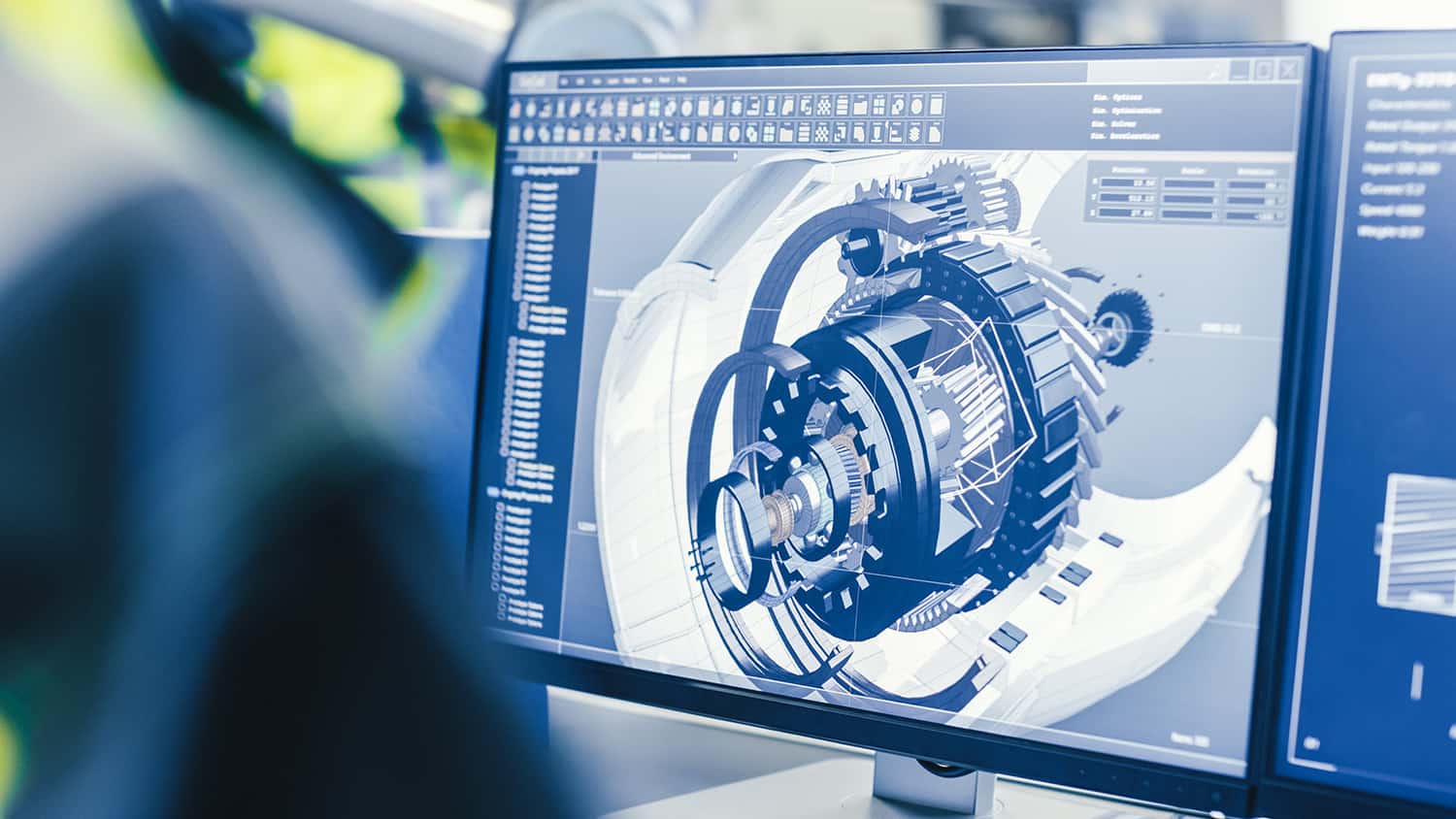Additive manufacturing, also known as 3D printing, is a process of manufacturing a solid object in a layer-by-layer form. The technology is heralding a new age in product manufacturing by building complex objects that are impossible to manufacture through traditional processes. However, it is not a single technology but a multitude of technologies that operate on theprinciple of additively manufacturing a product. In this article, we’ll look at the additive manufacturing process and aim to understand the typesof additive manufacturing technologies.
The additive manufacturing process
Additive manufacturing is a four-step process:
CAD design
The starting point of every additive manufacturing process is a CAD design. This is a digital model of the object to be manufactured. Design engineers create a CAD model in software like CATIA, Creo, Rhino, Fusion 360, or Tinkercad. This CAD design is saved in machine-readable formats like STL, OBJ, or STEP.
Slicing
The next step is to input the design file into a slicing software or slicer. The slicer slices the model into thin layers along the z-axis. These slices convert the 3D model into a sequence of 2D layers. The slicer also assigns coordinates to the slices so the printhead moves accordingly. Another function of the slicer is to control various parameters of the print, like layer height, speed, the temperature of the extruder and bed, retraction, support, and infill. The output from the slicer is a G-code text file that the 3D printer can read and understand.
3D printing
This is the step where the design is converted into a solid object. The file received from the slicer is loaded into a 3D printer. Before starting the print, users also have to prep the machine, which includes loading the material and heating the build chamber and material. Once everything is set, the print is started, and through layer-by-layer deposition (in FDM/FFF), laser curing (in SLA/DLP), or laser fusion (in SLS, DMLS, SLM, binder jetting), the three-
dimensional part is formed.
Post-processing
The additive manufacturing process does not end with the 3D printing of the object. The last step is post-processing, which involves the removal of the object from the print bed. Depending on the 3D-printed part, users also have to remove any support structures, cure it in a UV chamber, sinter it, or enhance its look and feel by sanding, polishing, painting or electroplating the final object.
Seven Types of Additive Manufacturing Technologies
The American Society for Testing and Materials (ASTM) has classified the additive manufacturing processes into seven categories. Let’s take a quick look at these seven technologies to explain everything you need to know as a manufacturer.
Vat photopolymerisation
Vat photopolymerisation is resin-based 3D printing. The world’s first 3D printing technology, stereolithography (SLA), falls under this category. In this technology, a vat of liquid photosensitive polymer resin is exposed to a laser or UV light. The laser or light traces the geometry of the object to be printed. The light cures the liquid resin and a solid layer is formed. This process is then repeated till the entire object is formed. In addition to SLA, popular technologies included in vat photopolymerisation are digital light processing (DLP) and digital light synthesis™ (DLS™).
Material extrusion
Fused deposition modeling (FDM) is the most popular technology under the umbrella of material extrusion. This technology is also known as fused filament fabrication (FFF). In this technology, a thermoplastic filament is drawn inside the 3D printer through a nozzle. The material is then heated, extruded through the nozzle, and deposited onto the build platform in a layer-by-layer process.
Powder bed fusion
Powder bed fusion (PBF) method uses powdered materials (polymers or metals), and the method is further divided into subcategories depending on the heat source used. The powdered material is spread across a build platform where the adjacent particles are fused with the help of a powerful laser or electron beam. Popular laser powder bed fusion technologies include selective laser sintering (SLS), direct metal laser sintering (DMLS), and selective laser melting (SLM), whereas electron-based powder bed fusion technology is known as electron beam melting.
Material jetting
Material jetting is similar to the process of a traditional 2D inkjet printer. Similar to the inkjet operation, in material jetting, a liquid photosensitive polymer material is dispensed from multiple printheads. This material is cured with the help of a powerful UV light source for individual layers. Sometimes this technology is called drop on demand (DOD).
Binder jetting
Binder jetting can be considered an amalgamation of PBF and material jetting. This technology uses powdered materials, as in PBF, and a liquid material like in material jetting. The powdered material is spread across the print bed and a liquid binder is dispensed according to the geometry of the object to be 3D-printed. This binder helps adjacent particles to adhere to each other, forming a strong bond. The process is repeated until the entire object is 3D-printed.
Sheet lamination
This category includes two subtypes: laminated object manufacturing (LOM) and ultrasonic additive manufacturing (UAM). LOM uses sheets of paper that are bound with the help of adhesives. Rollers are used to feed paper into the 3D printer. A laser traces the cross section of the object. It makes use of the crosshatch method to ensure that the 3D-printed part is easy to remove. A LOM 3D-printed part is only suitable for aesthetic, design communication, and prototyping purposes. Similar to the LOM process, the UAM technology uses metal sheets or ribbons to 3D-print an object. Every single sheet acts as a layer that is bonded together using ultrasonic welding. This process is repeated for every sheet until the object is formed.
Directed energy deposition
Directed energy deposition (DED) is widely used for 3D-printing metals and alloys. In this technology, a nozzle holding a metal wire, called a feed, traces the geometry of the cross section of the object. The feed is subjected to a powerful heat source, such as a plasma arc, laser, or electron beam. This melts the feed wire and the material is deposited on the platform. DED is also popularly known as laser engineered net shaping (LENS) and direct metal deposition. Unlike other methods, DED can also be used for repairs by adding materials onto existing parts.



